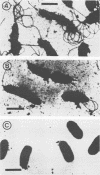Abstract
Tendon slices were used as model surfaces to investigate the role of flagella in the adhesion of Pseudomonas fluorescens to meat. The slices were introduced into a specially designed flow chamber, which was then filled with a suspension of the organism, and the tendon surface was observed at a x640 magnification. The same events that occur during the colonization of glass surfaces (apical adhesion of cells with rotation around the contact point, longitudinal adhesion, detachment of apically and longitudinally adherent cells) were also observed on tendon. Mechanical removal of the flagella resulted in no change in the contact angles with 0.1 M saline or alpha-bromonaphthalene, in the electrophoretic mobility, or in the adhesion of the organism to hydrophobic and ion-exchange resins. In addition, cells from which flagella had been mechanically removed still adhered extensively to tendon. Nevertheless, under comparable conditions (bacterial concentration, contact time), flagellated cells adhered to tendon in larger numbers than did deflagellated cells. This was entirely due to the ability of the motile flagellated cells to reach tendon in greater numbers than deflagellated cells.
Full text
PDF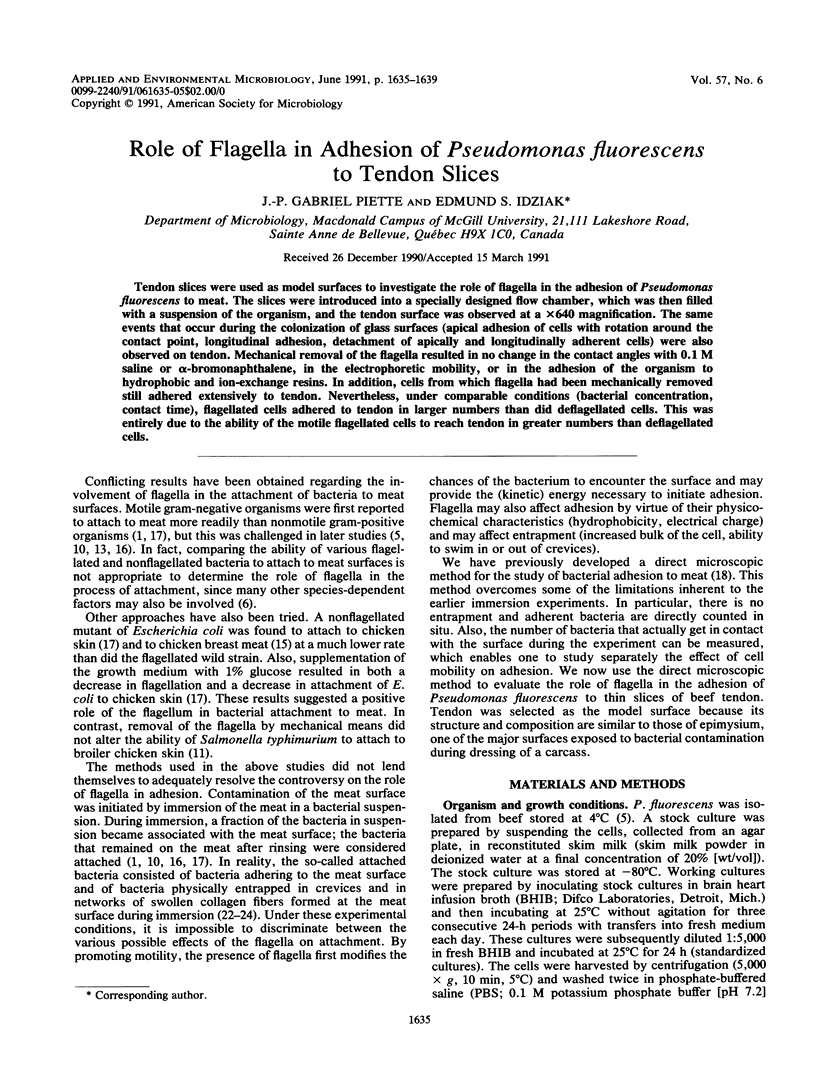
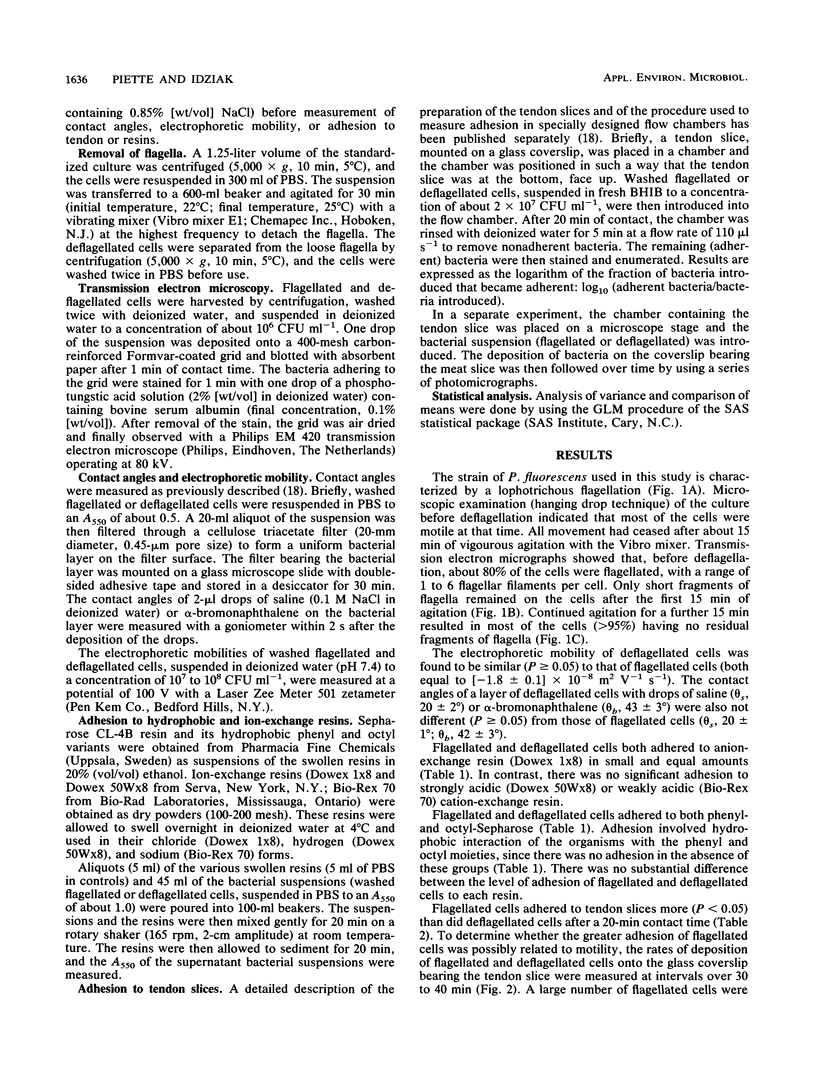
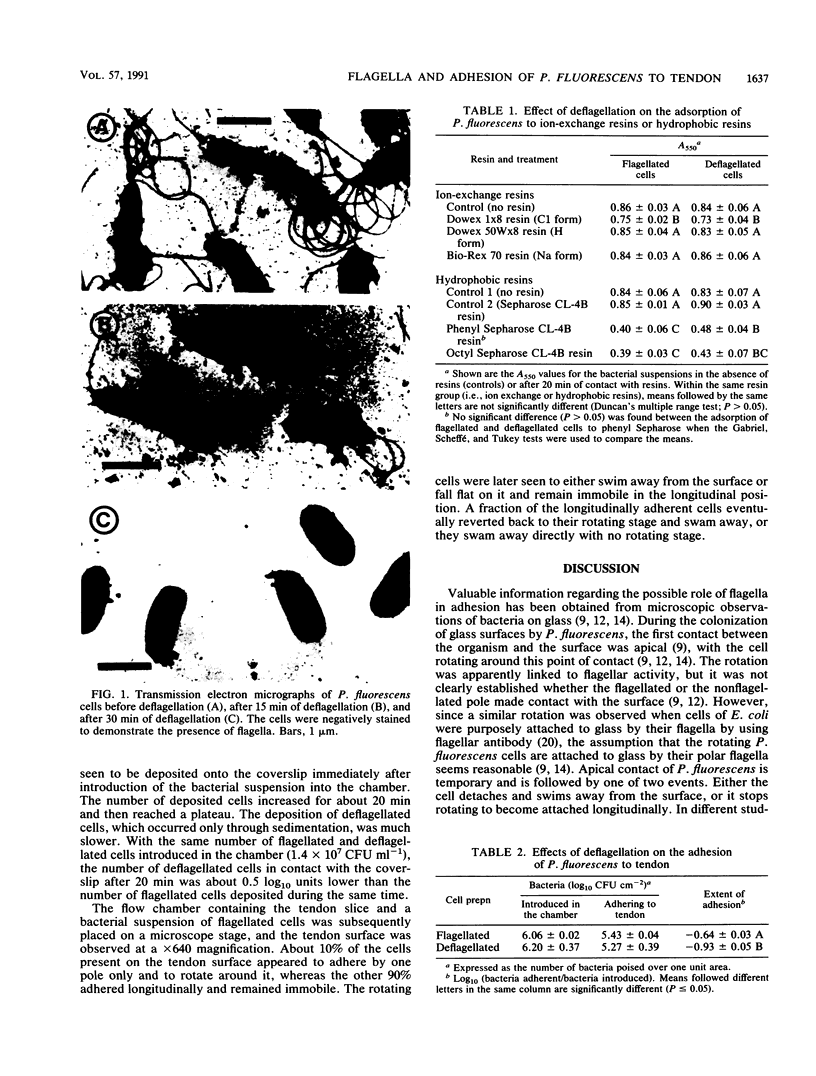
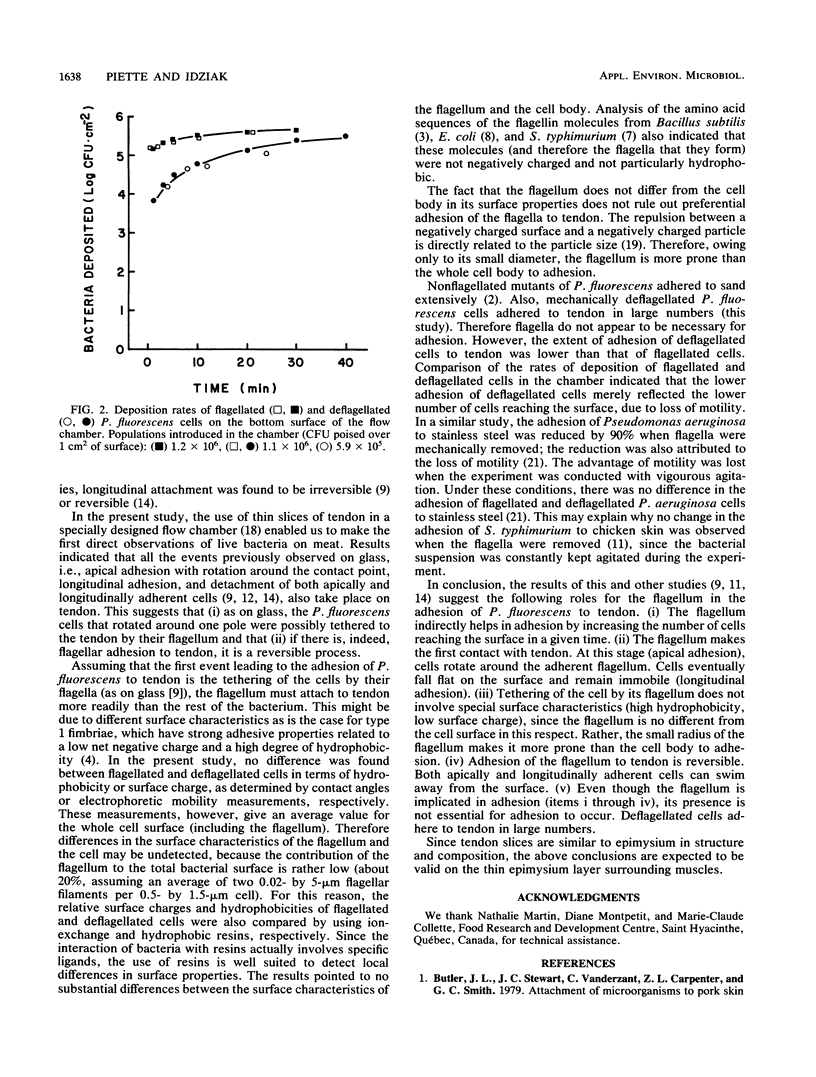
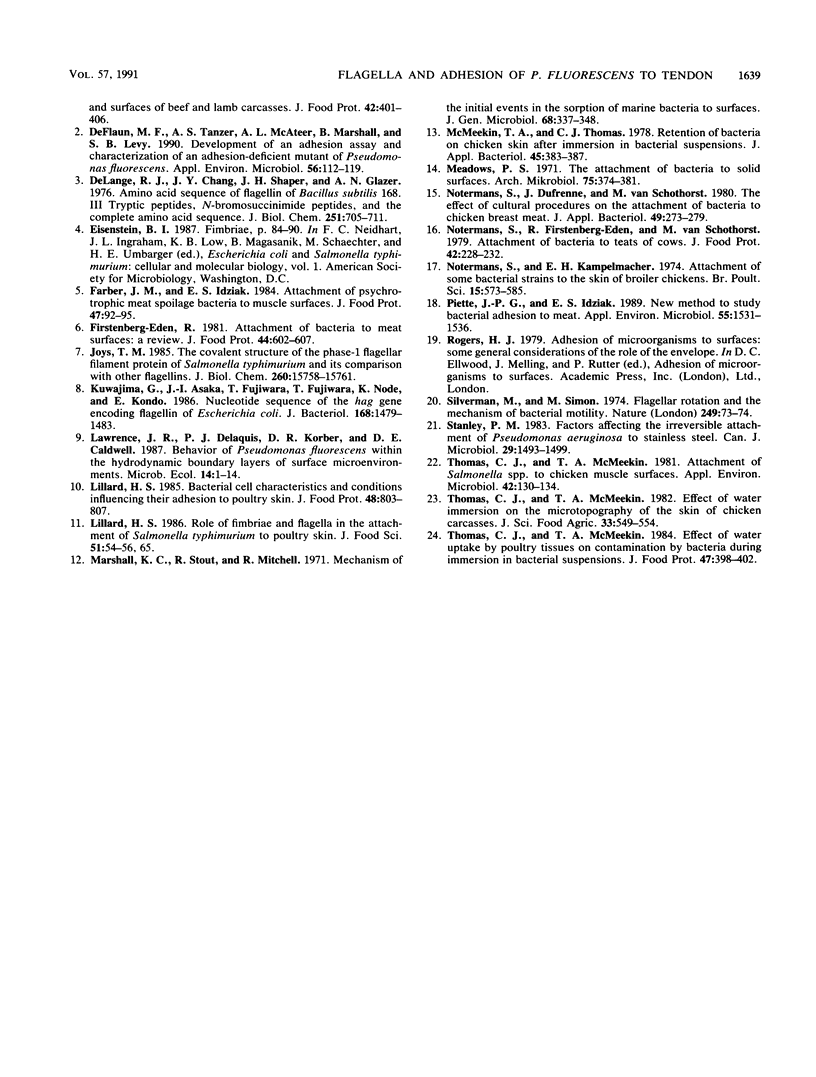
Images in this article
Selected References
These references are in PubMed. This may not be the complete list of references from this article.
- DeLange R. J., Chang J. Y., Shaper J. H., Glazer A. N. Amino acid sequence of flagellin of Bacillus subtilis 168. III. Tryptic peptides, N-bromosuccinimide peptides, and the complete amino acid sequence. J Biol Chem. 1976 Feb 10;251(3):705–711. [PubMed] [Google Scholar]
- Deflaun M. F., Tanzer A. S., McAteer A. L., Marshall B., Levy S. B. Development of an Adhesion Assay and Characterization of an Adhesion-Deficient Mutant of Pseudomonas fluorescens. Appl Environ Microbiol. 1990 Jan;56(1):112–119. doi: 10.1128/aem.56.1.112-119.1990. [DOI] [PMC free article] [PubMed] [Google Scholar]
- Joys T. M. The covalent structure of the phase-1 flagellar filament protein of Salmonella typhimurium and its comparison with other flagellins. J Biol Chem. 1985 Dec 15;260(29):15758–15761. [PubMed] [Google Scholar]
- Kuwajima G., Asaka J., Fujiwara T., Fujiwara T., Node K., Kondo E. Nucleotide sequence of the hag gene encoding flagellin of Escherichia coli. J Bacteriol. 1986 Dec;168(3):1479–1483. doi: 10.1128/jb.168.3.1479-1483.1986. [DOI] [PMC free article] [PubMed] [Google Scholar]
- McMeekin T. A., Thomas C. J. Retention of bacteria on chicken skin after immersion in bacterial suspensions. J Appl Bacteriol. 1978 Dec;45(3):383–387. doi: 10.1111/j.1365-2672.1978.tb04239.x. [DOI] [PubMed] [Google Scholar]
- Meadows P. S. The attachment of bacteria to solid surfaces. Arch Mikrobiol. 1971;75(4):374–381. doi: 10.1007/BF00407699. [DOI] [PubMed] [Google Scholar]
- Notermans S., Dufrenne J., Van Schothorst M. The effect of cultural procedures on the attachment to chicken breast meat. J Appl Bacteriol. 1980 Oct;49(2):273–279. doi: 10.1111/j.1365-2672.1980.tb05125.x. [DOI] [PubMed] [Google Scholar]
- Notermans S., Kampelmacher E. H. Attachment of some bacterial strains to the skin of broiler chickens. Br Poult Sci. 1974 Nov;15(6):573–585. doi: 10.1080/00071667408416148. [DOI] [PubMed] [Google Scholar]
- Piette J. P., Idziak E. S. New method to study bacterial adhesion to meat. Appl Environ Microbiol. 1989 Jun;55(6):1531–1536. doi: 10.1128/aem.55.6.1531-1536.1989. [DOI] [PMC free article] [PubMed] [Google Scholar]
- Silverman M., Simon M. Flagellar rotation and the mechanism of bacterial motility. Nature. 1974 May 3;249(452):73–74. doi: 10.1038/249073a0. [DOI] [PubMed] [Google Scholar]
- Stanley P. M. Factors affecting the irreversible attachment of Pseudomonas aeruginosa to stainless steel. Can J Microbiol. 1983 Nov;29(11):1493–1499. doi: 10.1139/m83-230. [DOI] [PubMed] [Google Scholar]
- Thomas C. J., McMeekin T. A. Attachment of Salmonella spp. to chicken muscle surfaces. Appl Environ Microbiol. 1981 Jul;42(1):130–134. doi: 10.1128/aem.42.1.130-134.1981. [DOI] [PMC free article] [PubMed] [Google Scholar]



